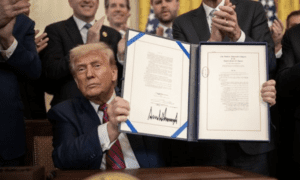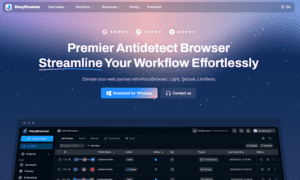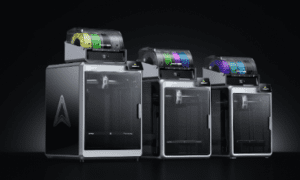It begins with a sound—a crisp, impossibly clean crunch that defies real-world physics. Your screen displays a banana, not as a fruit, but as a flawless piece of sculpted glass, being sliced with surgical precision. This is the new face of viral content, a mesmerizing, hyper-realistic sensory experience captivating millions on platforms like TikTok and Instagram.
But look past the hypnotic visuals and soothing sounds. This isn’t just a fleeting social media trend. It’s the frontline of a significant market disruption, powered by groundbreaking generative AI models like Google’s Veo 3. This phenomenon, known as AI ASMR, is rapidly evolving from a creative curiosity into a new, monetizable asset class within the creator economy.
For business leaders, marketers, and investors, understanding this shift is critical. We are witnessing the birth of a new content paradigm where high-production value is decoupled from high cost, opening up unprecedented opportunities for branding, advertising, and new digital ventures. This analysis will deconstruct the AI ASMR trend, examine the core technology driving its adoption, and explore the emerging economic landscape it is creating.
AI-Generated Media: A New Asset Class for the Creator Economy
For over a decade, traditional ASMR (Autonomous Sensory Meridian Response) has been a quiet giant in the content world, built on capturing the subtle, real-world sounds that trigger relaxing sensations. It required specialized audio equipment, controlled environments, and a deep understanding of sensory triggers.
Generative AI flips this model on its head. Instead of capturing reality, it generates a more perfect, more engaging, and more surreal version of it. The key characteristics of this new digital asset are not just creative, but commercial:
- Surreal Materiality as a Market Differentiator: By applying impossible textures—glass, chrome, moss, liquid metal—to everyday objects, creators can instantly generate novelty and stand out in a saturated content market. This visual disruption is a powerful tool for capturing audience attention.
- Hyper-Realistic Rendering as a Quality Signal: The photorealistic quality of the output, despite the surreal nature of the subject, signals high value. This level of visual fidelity was once the exclusive domain of high-budget CGI studios; it is now accessible to individual creators.
- Synchronized Audio as a Key Feature: The game-changing capability of models like Veo 3 is the seamless, simultaneous generation of video and perfectly synced audio. This eliminates the costly and time-consuming need for post-production sound design, drastically lowering the barrier to entry for producing premium sensory media.
The result is a highly effective and economically efficient content format. It combines low production costs with extremely high engagement metrics (watch time, shares, comments), representing a clear ROI for creators and brands alike.
Deconstructing a Viral Engine: Market Appeal and Monetization
The “Glass Fruit” phenomenon is a perfect case study in product-market fit. Its viral success isn’t accidental; it’s the result of hitting multiple consumer psychology triggers in a highly efficient package.
From a business perspective, here’s why it works:
- High Engagement Hooks: The combination of aesthetic beauty, satisfying and predictable patterns, and extreme novelty makes the content inherently “sticky.” This leads to longer watch times and higher user retention, metrics that are highly valued by platform algorithms and advertisers.
- Low-Cost, High-Velocity Production: A single creator can generate dozens of variations of a viral concept in a single day, testing different materials, objects, and sounds to optimize for engagement. This agile production model is impossible in traditional video creation.
- Diverse Monetization Streams: For creators, this trend opens up multiple revenue channels beyond simple ad revenue. Successful AI ASMR channels can secure lucrative brand deals (imagine a crystal Coca-Cola can being opened), sell their most successful prompts as digital products, or offer custom video generation services to businesses.
This formula has created a new class of “AI artists” who are not just creators, but entrepreneurs building entire media businesses on the back of generative AI.
Veo 3: The Technology Driving the Disruption
This content revolution is being powered by the latest generation of text-to-video AI models, with Google’s Veo 3 leading the charge. Its architecture possesses a unique combination of features that make it the ideal engine for this new digital economy.
- Sophisticated Semantic Understanding: Veo 3 can interpret complex, descriptive prompts that blend artistic direction with technical specifications. It understands the difference between “a knife cutting a banana” and “an extreme macro shot of a razor-sharp obsidian knife slowly slicing a glistening, soft-glass banana,” a level of nuance crucial for high-quality output.
- Advanced World Simulation: The model generates high-definition video by simulating the physics of light, texture, and motion. Its ability to accurately render how light refracts through a complex glass object is what creates the believable illusion that captivates viewers.
- Automated Audio-Visual Synthesis: This is Veo 3’s core strategic advantage. By automating the creation of a perfectly synced, high-fidelity soundtrack, it removes a major bottleneck and cost center from the production pipeline. This democratization of high-quality audio-visual production is a direct challenge to the economics of traditional media studios.
The Prompt as a Business Asset: Crafting for Commercial Success
In this new market, the prompt is not just a line of text; it’s a valuable piece of intellectual property. “Prompt engineering” is fast becoming a critical commercial skill. A well-crafted prompt is a repeatable recipe for generating high-engagement digital assets.
The formula for a commercially successful prompt often includes:
[Camera Directives] + [Subject & Action] + [High-Value Material] + [Professional Lighting/Environment] + [Commercial Sound Descriptor]
Example Prompt 1: Luxury Goods Angle
“Extreme macro shot, cinematic slow motion. A pristine, flawless diamond is sliced in half by a laser beam on a black velvet background. Studio lighting with a dramatic lens flare. The action creates a single, sharp, high-frequency ‘shing’ sound, followed by a deep, resonant hum for ASMR effect.”
Example Prompt 2: Food & Beverage Angle
“Overhead shot of a carbonated beverage being poured into a cup made of solid, bubbling ice. The liquid itself is a glowing, golden nectar. Condensation realistically drips down the side of the ice cup. Capture the crisp, fizzing, bubbling sounds in high-fidelity ASMR.”
The Investment Thesis: Why AI-Generated Media is the Next Frontier
While the viral videos are entertaining, the smart money is looking at the profound business implications. AI-generated media is not a passing fad; it’s a foundational technology poised to disrupt multiple industries.
- Disruption of the Stock Media Industry: Why would a marketing agency pay a premium for a generic stock video from Getty Images or Shutterstock when they can generate a perfectly bespoke, unique, and more engaging video clip in minutes for a fraction of the cost? This technology poses an existential threat to traditional stock media business models.
- Hyper-Personalized Advertising at Scale: Brands can leverage this technology to move beyond A/B testing and into A-to-Z testing. They can generate thousands of ad variations, each with slightly different visuals, materials, and sounds, tailored to hyper-specific audience segments, dramatically increasing conversion rates.
- Emergence of New Platforms and Services: The accessibility of this technology is creating a new ecosystem. We are seeing the rise of platforms that provide streamlined access to these powerful models, offering services tailored to businesses, agencies, and professional creators who require agile and scalable solutions.
For businesses and professional creators, direct access to foundational models like Google’s can involve waitlists or rigid, enterprise-level pricing. This is where a new layer of service providers is adding significant value. For instance, teams looking for flexible pricing or pay-as-you-go options to integrate this technology into their workflow can use veo 3. This approach allows companies to leverage state-of-the-art video generation without the heavy upfront commitment, enabling rapid prototyping and scalable content production.
Conclusion: The Future of Digital Assets is Being Prompted
The AI ASMR trend is the tip of the iceberg. It serves as a powerful proof-of-concept for a future where digital content is generated, not just captured. We are at the beginning of a major economic shift, moving towards a “sensory economy” where the most valuable assets are not physical goods, but unique, engaging, and algorithmically optimized sensory experiences.
For businesses, the message is clear: the means of producing high-quality, engaging video content have been fundamentally democratized. The companies that will win in the next decade are those that understand that a well-crafted prompt can be more powerful than a multi-million-dollar production studio. The future of digital assets is being written, one line of text at a time.
Read More From Techbullion



































